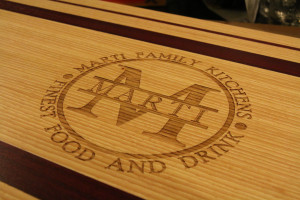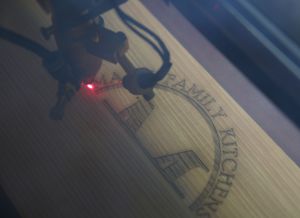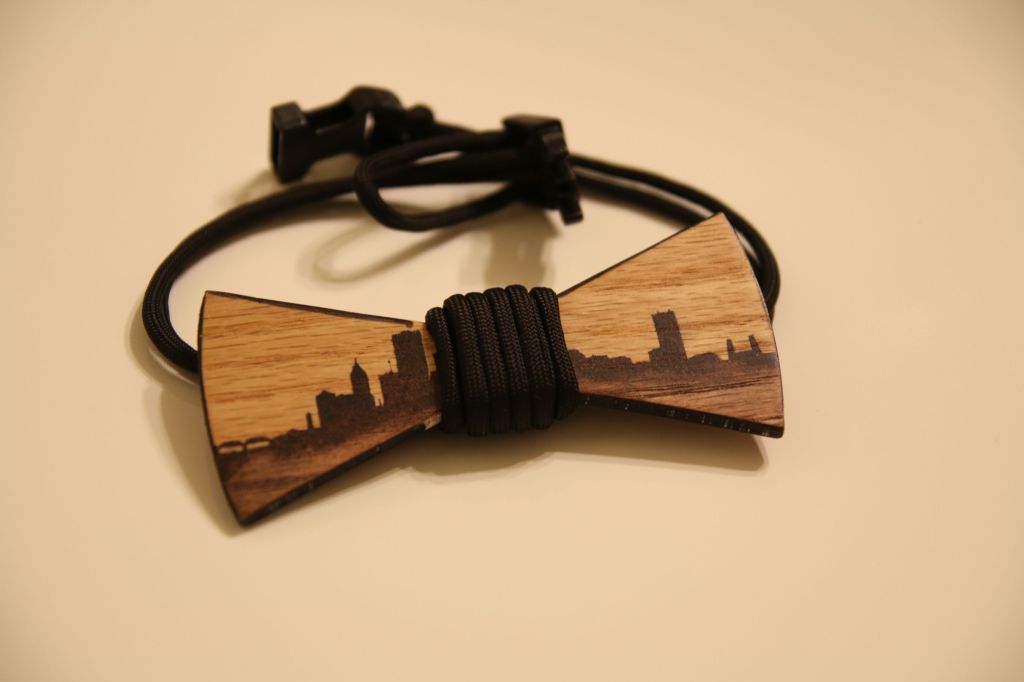As always, racked my brain on what to get/make mom for Christmas. I eventually settled on a ladder-style planter for her to grow herbs or smaller flowers, but during my research into the different types of planters, I came across a series of terrace-style planters.
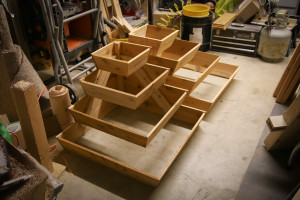 I settled on making two planters that had a right-angle corner. That way the planters could either be placed in two separate corners of the garden, or the planters could be secured together side-by-side, to make one larger terraced planter. I didn’t know what mom’s vision for her garden had in store, so I thought versatility would be appreciated.
I settled on making two planters that had a right-angle corner. That way the planters could either be placed in two separate corners of the garden, or the planters could be secured together side-by-side, to make one larger terraced planter. I didn’t know what mom’s vision for her garden had in store, so I thought versatility would be appreciated.
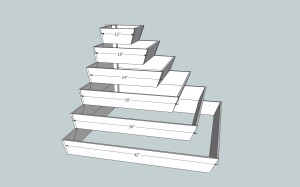 Drew up some plans in Sketchup, and then found a calculator online to help me get the compound angles I’d need to dial into my miter saw.
Drew up some plans in Sketchup, and then found a calculator online to help me get the compound angles I’d need to dial into my miter saw.
Cut the planter sides out of normal cedar fence pickets that were found at the local big-box store, and reinforced the structure with a 2×2 cedar ‘spine’ at the right-angle corner. I attempted to screw everything together, but the compound miter angles made it fairly difficult; I wound up putting long nails into my pin nailer, and just nailed the heck out of it.
My initial design had two more terraces, but before I cut the boards I ran out to the car with the tape measure. Two of the four terrace planters would fit in my car for transport on Christmas day. Any more terraces, and I would have to do assembly there on Christmas day.
Lessons Learned: Compound miters are really easy if you keep them to just one corner. Also, if the cedar fence pickets were a little thicker, I probably wound have tried to use some kind of spline to help keep everything together.
I didn’t really think about it until the planters were done, but there’s a lot of wasted space in this style of planter that needs to be packed with fill dirt. I feel kind of bad that in giving my mom the planters for Christmas, I also inadvertently got my old man an extra chore.
